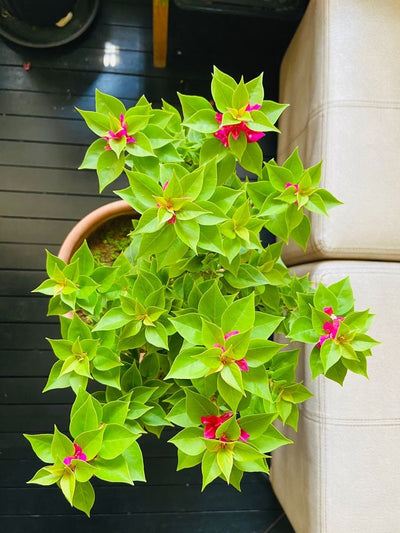A Complete Guidelines to grow Bromeliad And its Care For Gardening
Bromeliad plants provides an exotic touch to the home and bring a sense of the tropics and sun-kissed climates. Growing a bromeliad as a houseplant is easy and brings fantastic texture and color to the interior garden. Learn how to care for a bromeliad plant and you will have a long lasting unique houseplant that is low maintenance.

Know more about Bromeliad Plants
High maintanance required when it is unusual appearance of the bromeliad would seem to indicate that the plant special gardening skills. The plant is prized for its thick foliage plants that grows in a natural rosette. Near the end of its life, a bromeliad flowers plant may produce an inflorescence, or flower. whose form and color vary widely about each variety. The wide leaves are sword shaped or scoop-like and grow around a central “cup.” This cup grab water in the plant’s habitat. Bromeliad flower plants are often epiphytic and cling to trees or other structures. They are not parasitic but simply use the structures as perches from both sun and moisture.
Gardening of Bromeliad flower

These plants are largely available at nurseries and garden centers. The plants need bright or moderate light as indoor specimens. New gardeners learn how to grow bromeliads will find that the plant doesn’t need deep pots or thick potting soils. They do even better in small pots and may grow in low soil mediums such as orchid mix, a blend of bark, sphagnum moss and other organic amendments.
Care for a Bromeliad Plant
Bromeliad plant care is easy and requires minimal of special tools or fertilizers. Feed the plants with a half strength fertilizer every month in a growing season. Water needs are easily met by filling the cup at bottom of the leaves. The water that collects in the pot should be emptied out weekly to remove debris and dead insects that stagnant water tends to leak into the cup. Set the pot in a saucer(wide plate) of gravel filled partially with water to increase humidity and help provide a moist atmosphere. Make sure the roots are not fully submerged in the water or this might invite rot. Some bromeliads grow as well as “air plants,” which are glued or nested onto logs, moss or other non-soil organic items. You may have been seen Tillandsia plants wired onto coconut shells with no soil. These plants collects all the food and moisture they need with their leaves but need a little help from you in the indoor setting.

Bromeliad Life Cyle:
Growing a Bromeliad Pup Donot label yourself a black thumb if your bromeliad plant begins to die within a year or two. These epiphytes are not long lived but they will generally start to die back after flowering. Although interior bromeliad flower plants will fail after a while and cease growth, they will produce offsets, or pups, that you can remove and start as new plants. Watch at pups at the base of the plant and nurture them until they are large enough to break away from the parent plant. To remove them, cut away from the parent and then plant them in sphagnum moss mix or any well-draining medium. Then sadly, it’s off to the compost pile with the original bromeliad plant, but you left with a little carbon copy that you can tend to its full maturity when the cycle starts all over again.




Leave a comment